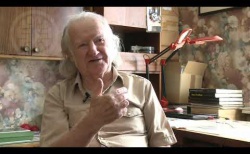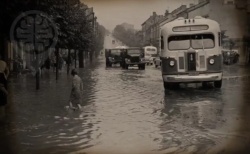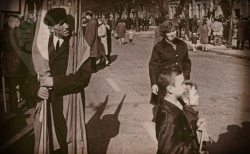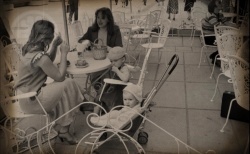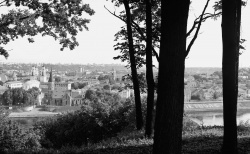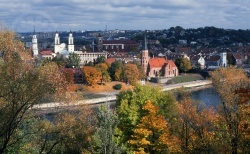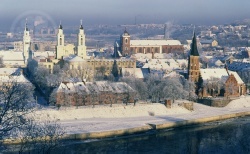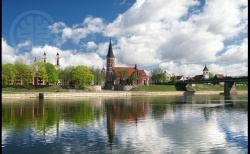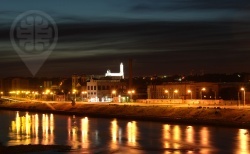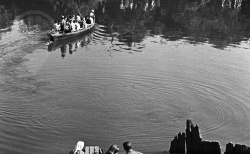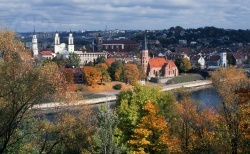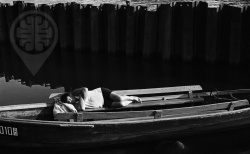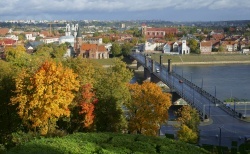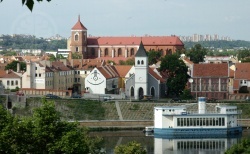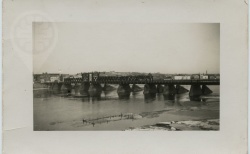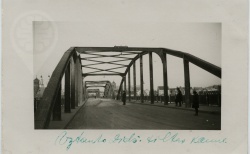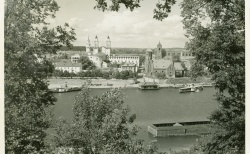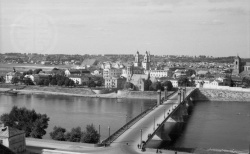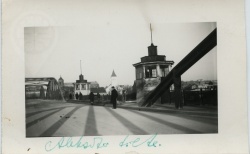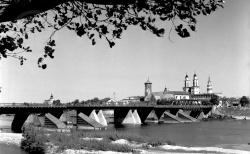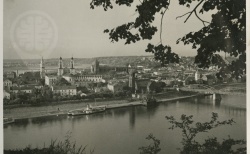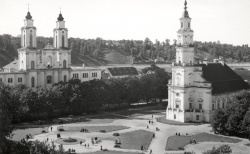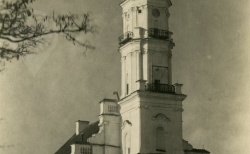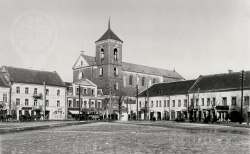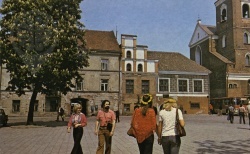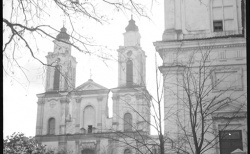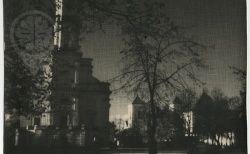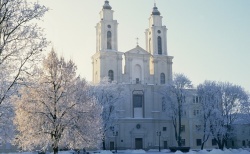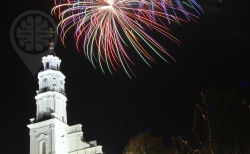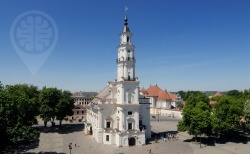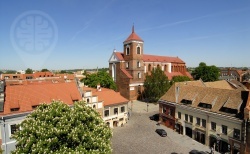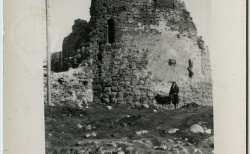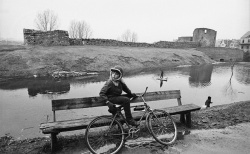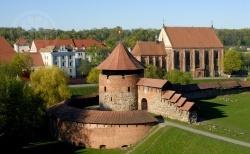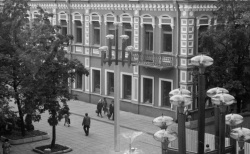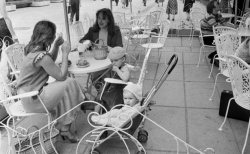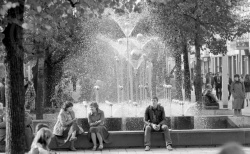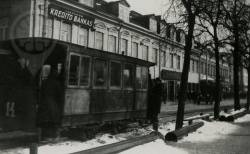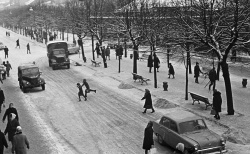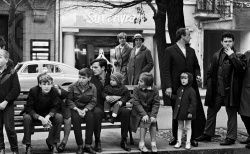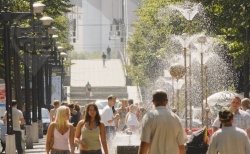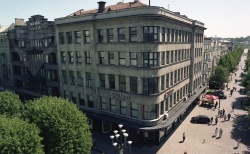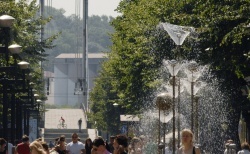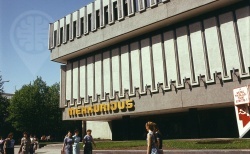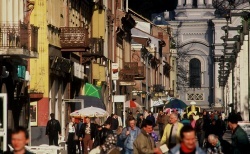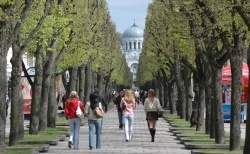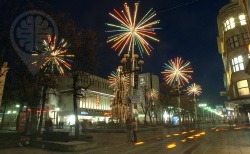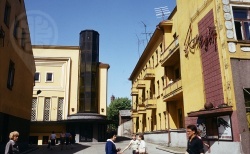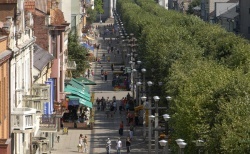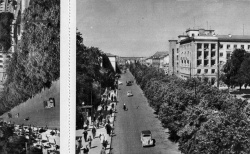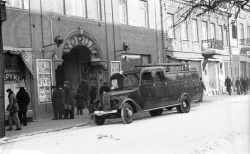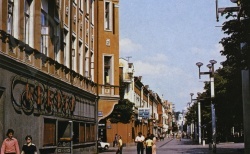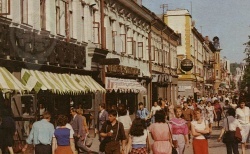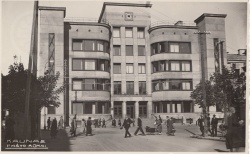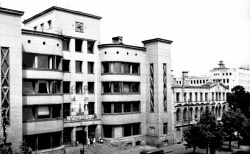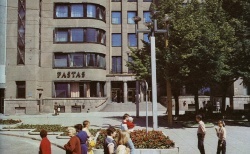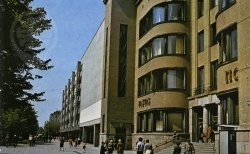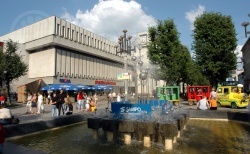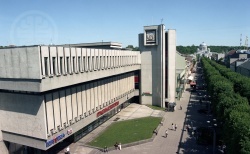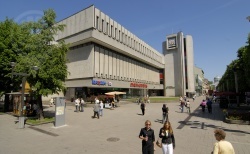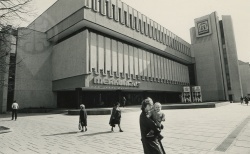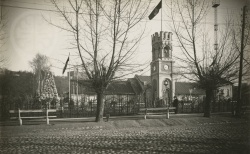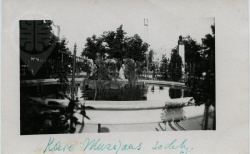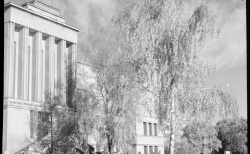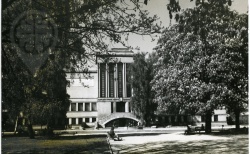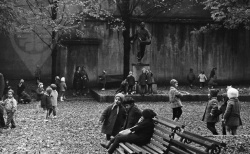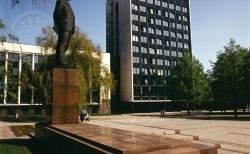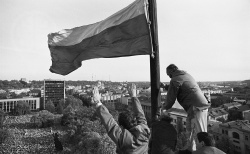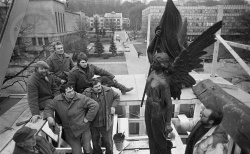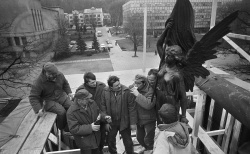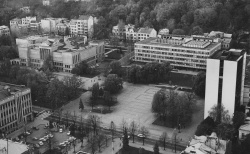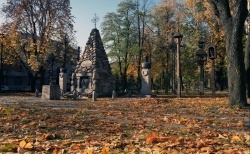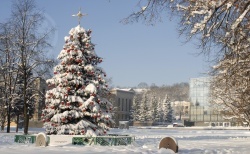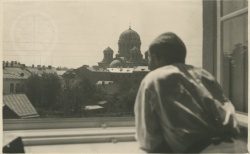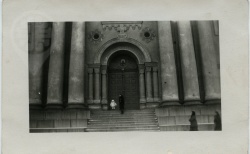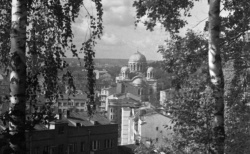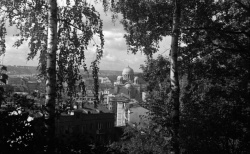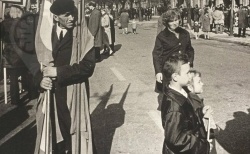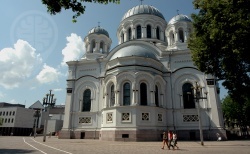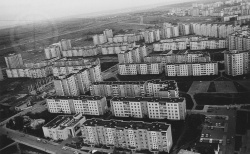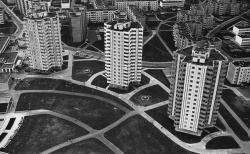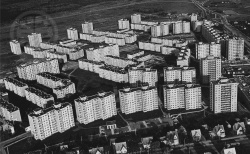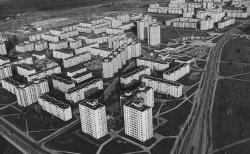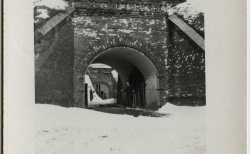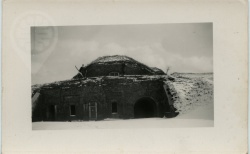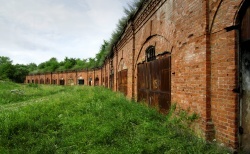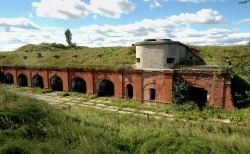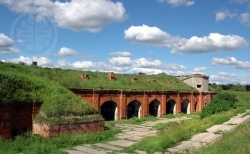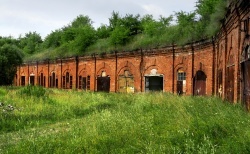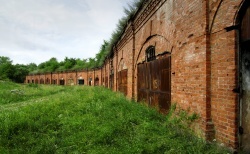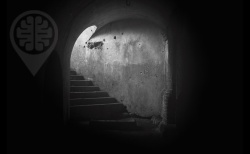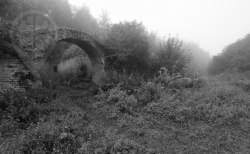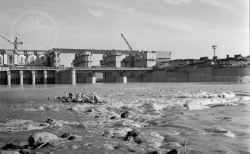About the Route
How we do remember Kaunas? How did Kaunas look in our memories during the Interwar or the Soviet period? What are the views associated with it? Are our memories authentic and related to our experiences? Maybe they are suggested by the old city photos, pictures seen in newspapers, albums or the Internet?
1 Landscape of Aleksotas / River
Kaunas landscape
Hills of Aleksotas and Linksmadvaris nestling on the left bank of Nemunas have always lured residents of Kaunas and its guests to admire the vista of the city. It is no coincidence that in 1861, the photographer Anton Rohrbach chose this place to capture the view and take what is now considered to be the first photographs of Kaunas. Later, both amateur and professional photographers would capture the city view from a similar vantage point. Trees growing around, and the changing relief of the slope would serve for unconventional decisions of photographers. Not only are the views of Kaunas from various periods of time a great way to survey the architectural development of the city, but they also allow us to see how the life and activities in Nemunas River changed as well. Together they tell about the history of bridges that connected Aleksotas with the Old Town.
The first bridge across Nemunas that connected Aleksotas and the Old Town was built at the end of the 18th century. It is likely that it has been a seasonal bridge and in order to avoid the damage caused by ice floes and floods, it would only stand from spring to autumn. In 1914, the Russian army built a stable bridge, but they burned it down themselves, when retreating in 1915. On the remaining columns, Germans soon built wooden lintels. The exploitation of the bridge started again, and it was used up until 1930. That year, the new bridge was built next to the old bridge. It was called the Bridge of Vytautas Magnus. In 1940, it became Aleksotas Bridge and was blown up in 1941 by the retreating Soviet Army. Even though Germans rebuilt it, they blew it up themselves in 1944. When the Soviets returned, they built a temporary wooden bridge, but it was washed away in 1946 by a flood. Finally, in 1948, a new bridge was built. It was called the Aleksotas Bridge. The bridge has been used up to this day. Only in 2008, the name of the bridge was restored back to Vytautas Magnus.
Floods
Spring floods, to some extent, have probably been happening in Kaunas since the very establishment of the city. And maybe the history of floods in Kaunas is longer than that of the city itself. No one will ever remember the first floods. However, the last ones are quite prominent, and even if they are not etched in our memory, they can be found in documents and pictures. During the floods, Kaunas would turn from the Little Paris into the Little Venice. Floods of considerable scale and damage took place in 1926, 1931, 1936, 1946 and 1958. Construction of Kaunas Hydroelectric Power Plant helped to manage the danger of floods, but they cannot be completely avoided to this day.
2 Town Hall Square
Town Hall Square is the oldest square in Kaunas. Since the 15th century, it has been the market place. For a long time, it was the only larger space in Kaunas city, so this was where various parades and other celebrations took place. The Town Hall was built in this square in the 16th century, but its current appearance has been the result of a makeover that took place in the 18th century. The square changed its name more than once; in the second half of the 19th century, it was called the Soboro Square, when the Jesuit church was converted into the Alexander Nevsky Sobor (Orthodox Cathedral). It became more attractive during the Interwar Period, as various plants and flowerbeds made it more appealing to the residents as a place to spend their free time in it.
3 Kaunas Castle
Kaunas Castle was first mentioned in the historical sources in 1361. We know that the first castle has been destroyed during the fights with the Teutonic Order. The current remnants of the castle belong to the second Kaunas Castle which was constructed in the 14th–15th century. However, its importance was already diminished and after the war with Moscow in 1655, it was no longer used for the defence of the city. However, Kaunas Castle suffered not only from the enemy attacks; a considerable part of it was destroyed by Neris River. During the second half of the 19th century, wooden houses were built around the castle and it gradually turned into a shantytown. The necessity to restore or even rebuild the castle became relevant in 1930, during the commemoration of Vytautas Magnus. However, it was only possible to carry out tower preservation works. Conservation of the castle and fore-work was continued during the Soviet times, when it was also partially restored. Kaunas Castle changed its appearance again after the controversial reconstruction works in 2010–2011.
4 Laisvės alėja (Freedom Avenue)
The city expansion started in 1843 with the establishment of Kaunas Governorate. In 1847 the plan of the New Town was confirmed with Nicholas’ Avenue as its main axis. Since the sixth decade of the 19th century, economic and cultural centre of Kaunas gradually started moving from the Old Town to the New Town. During the WWI, the Avenue briefly got the name of Kaiser Wilhelm and in 1919, it changed to Laisvės Alėja (Freedom Avenue). Institutions of trade, catering and culture would centre around it. Despite the fact that horse tramway (and later buses) ran through the streets, it became a favourite rendezvous place for residents and guests of the city to meet and spend time here. From 1946 to 1961, unfortunate fate of being called Stalin’s Avenue fell upon it, and in 1961 the name of Laisvės Alėja was restored. In 1982, the street became a pedestrian area and various accents like the fountain were introduced. Today Laisvės Alėja is changing its appearance again.
5 Central Post Office
During the times of Kaunas as the temporary capital, the central post office was established in a tsar-era building that could no longer meet its growing needs. The talks about the construction of the new post office started as early as in 1924, but the works themselves started only in 1930. Built within two years and based on the project by architect Feliksas Vizbaras, the new Central Post Office building became one of the most important representative buildings in Laisvės Alėja. In 1935, electronic clock was installed at the top of the main façade and made passers-by look up and see the five-storey building that was considered a skyscraper of Kaunas in those times. The building performs some of its initial functions to this very day.
7 Vienybės aikštė (Unity Square)
The history of the Unity Square started in 1847, when the plan for the New Town of Kaunas was confirmed. Markets used to take place in this newly formed square, so the square was called the New Market Square. It has gotten its current name (Vienybės aikštė) in the 1920s. There is the War Museum on the west part of the square. In 1921, a monument for those who died for the independence of Lithuania was erected in the garden of the Museum; in 1928, it was joined by the Freedom monument, and in 1934, the Grave of the Unknown Soldier joined the composition. The square became the place, where city-level and national commemorations would take place. After WW2, the Soviets destroyed the ensemble in the garden of the War Museum; it was restored only in 1988–1989. Up until then, the most important accent of the reconstructed square had to be the Lenin’s monument.
8 Soboras (St. Michael the Archangel Orthodox Cathedral)
Kaunas Garrison Church (sobor) was built in the east part of the axis of Nicholas’ Avenue (now – Laisvės Alėja) in 1895. In September of the same year, Soboras was solemnly inaugurated as St. Peter and Paul’s Orthodox Cathedral. The new landmark immediately attracted the attention of a photographer named Vaclav Zatorski. Soboras has been continuously captured in pictures ever since, and would mostly dominate the camera’s lens, irrespective of the fact whether photos have been taken from the axis of Laisvės Alėja and Gedimino Street or city landscapes immortalised from Žaliakalnis hills.
9 Eiguliai Microdistrict
The construction of multi-residential buildings in Kaunas started in 1950–1953, and it expanded considerably in the 1980s. Construction of Dainava micro-district started in 1963. In 1973–1974, construction of multi-residential buildings moved to the newly developed Kalniečiai micro-district. The first sixteen-storey residential buildings in Kaunas appeared in 1984, next to the Vitebsko (now Čečėnijos) Square. The construction of residential Eiguliai micro-district started in 1979 next to the growing micro-district of Kalniečiai. The new general construction plan was introduced in 1983, and, as a result, construction of Šilainiai micro-district started. The aim was to create an adequate infrastructure around the residential houses with kindergartens and schools, trade and catering, culture and service institutions.
10 Kaunas Fortress
In 1879, the Russian Empire decided to build a first-class fortress in Kaunas. Construction of forts and other defensive structures started in 1882 and was completed in 1889. Seven forts were built, later followed by the eighth and the ninth forts. Fortress expansion plan was adopted in 1912, but it was not realized. When World War I started, Kaunas Fortress did not withstand the attack and was conquered by Germans. When Kaunas became the provisional capital, there were attempts to find use for the damaged constructions of the fortress. In some of the forts, cheap housing colonies were established, while others were turned into prisons. The Seventh Fort even housed the Central Archive. The years of the WW2 painted the history of the fortress in black tones, as in most of them, Jews and other citizens of Lithuania were killed.
11 Kaunas Hydroelectric Power Plant
The construction of Kaunas Hydroelectric Power Plant was started in 1955 and lasted for four years. Nemunas River was dammed in July, 1959, thus forming the Kaunas Reservoir. In autumn of the same year, the power plant started generating power and in 1960, it already worked in full capacity. The construction of the power plant was widely used for the purposes of propaganda, not to mention flooded villages and broken destinies. In 2014, Kaunas Hydroelectric Power Plant was renamed as Kaunas Hydroelectric Power Plant of Algirdas Brazauskas.

